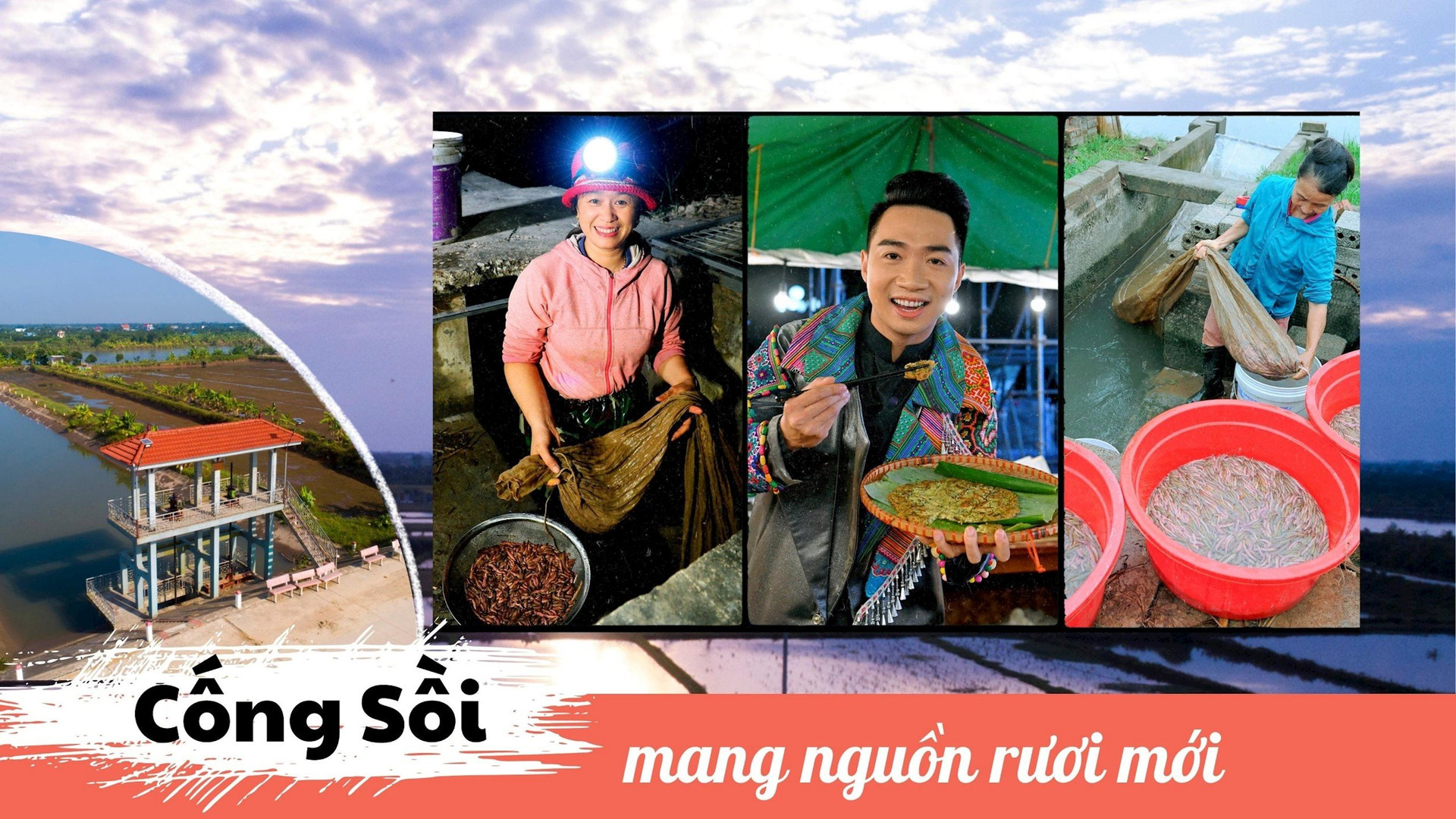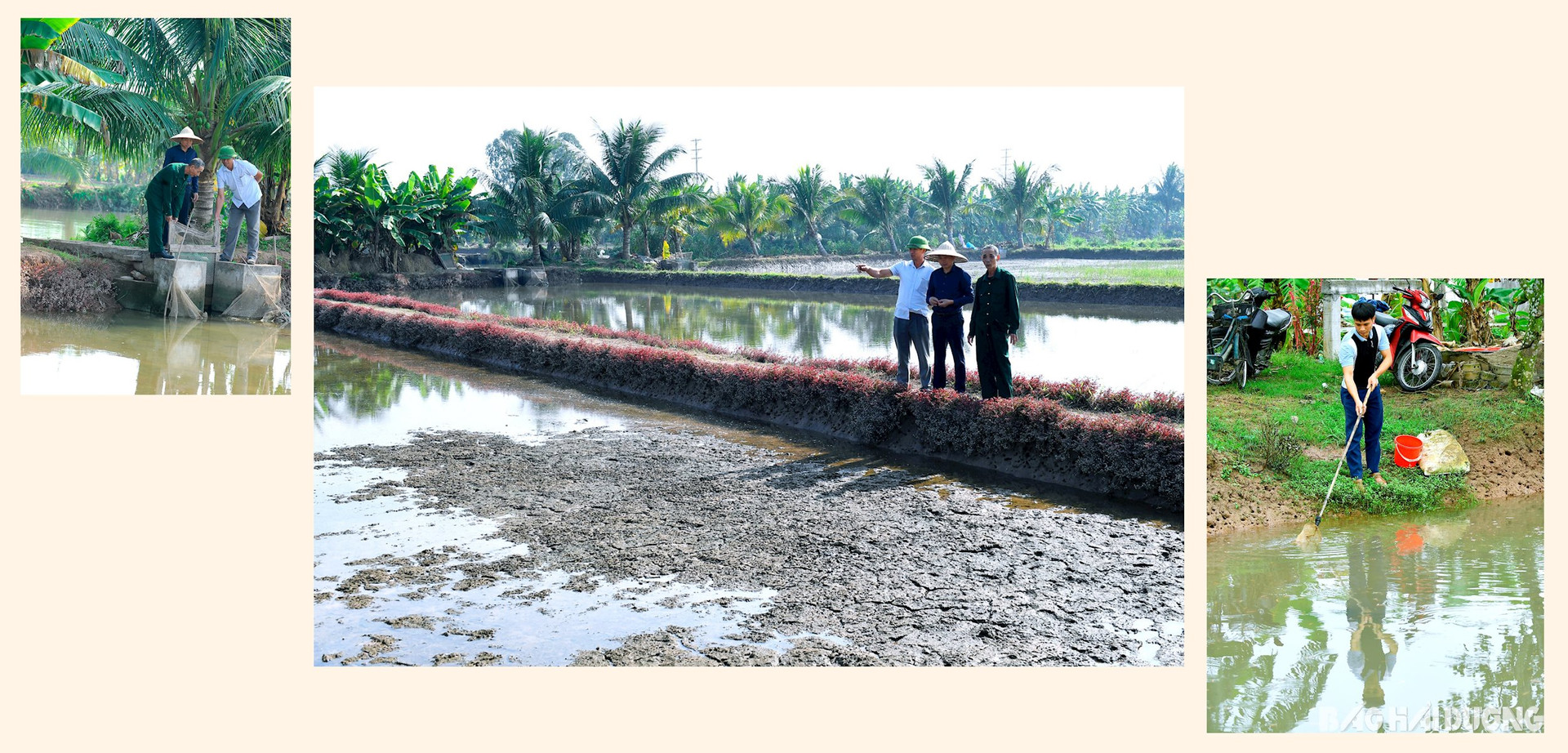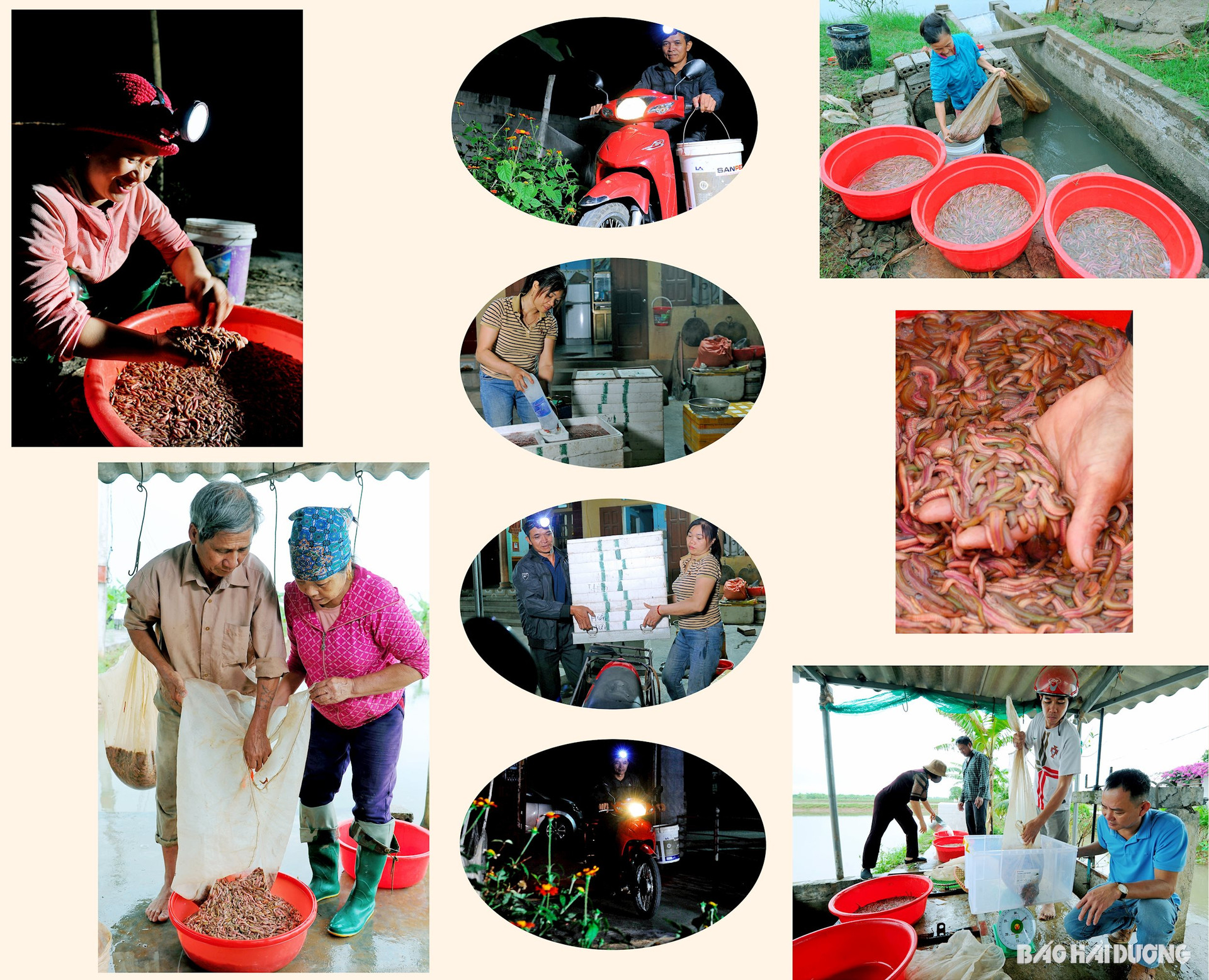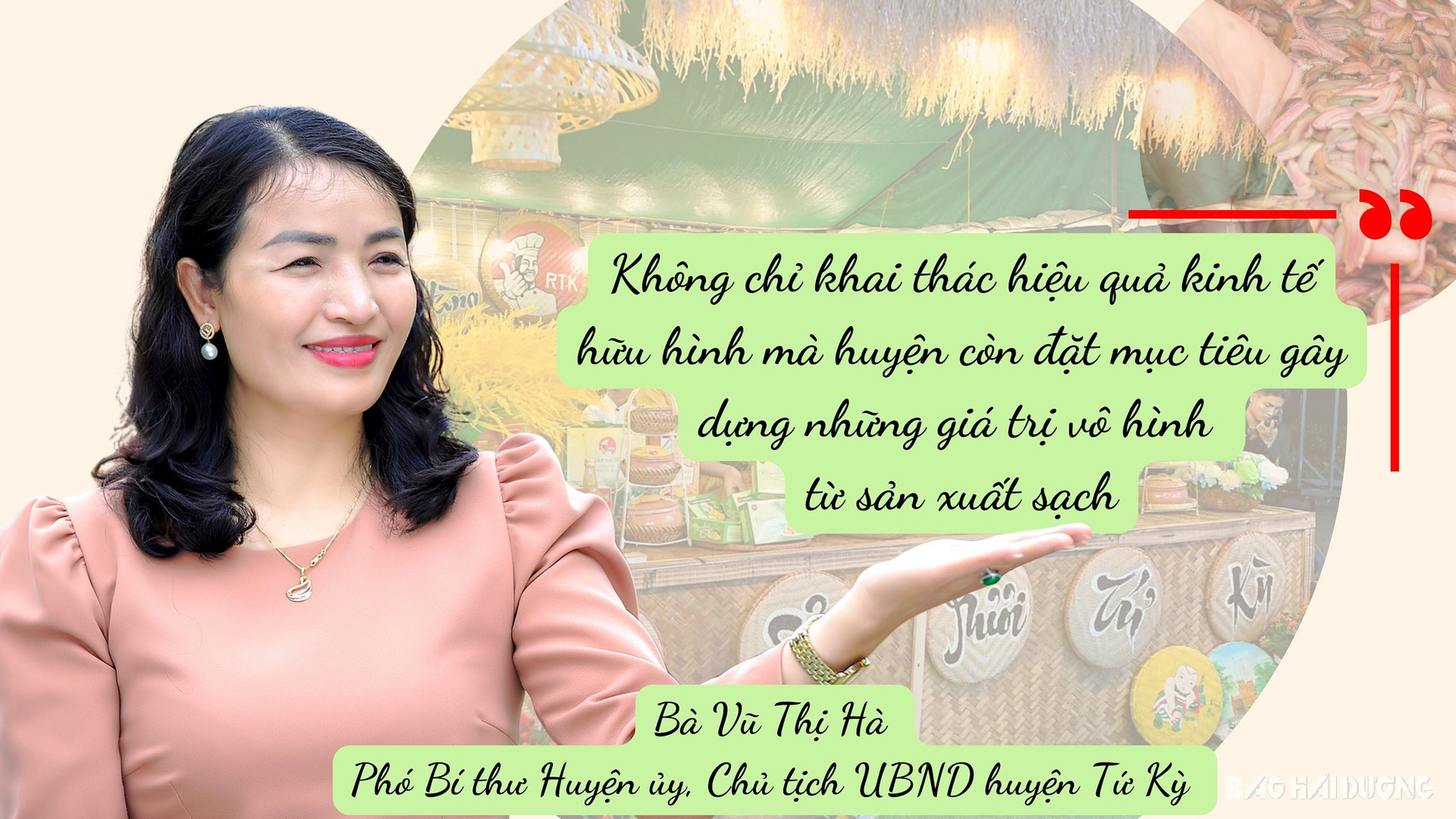Cong Soi has multiplied the joy and fulfilled the expectations of farmers who always cherish green agriculture, when earthworms are "raised" in the fields.

Since the new Soi culvert was built, put into operation and used, in An Thanh (Tu Ky) area, the earthworm is not only a characteristic of the alluvial land along the Thai Binh river but has also been "raised" in the fields.
The dry sunlight covering the flooded fields makes anyone who comes to An Thanh commune for the first time feel strange because according to the crop calendar, early winter is not the time for planting.
Upon closer investigation, we learned that for the past 3 years, farmers here have been bringing earthworms to live inside the fields. Therefore, it is necessary to continuously regulate the water in and out to exploit this valuable natural resource. This seemingly miraculous achievement is due to the efforts and determination of the people and authorities at all levels when building the new Soi sluice.
An Thanh land is located in the lower reaches of Thai Binh river, so it is favored with special products of earthworms and clams. However, for many years, farmers have only exploited earthworms and clams naturally on the riverbanks, while in the fields they still grow rice twice a year. This is a place where fresh and salt water sources clash, and saltwater intrusion often occurs, so the efficiency of rice cultivation is not high.
Just a dike away, creating a contrasting picture, the outside is a large source of income from earthworms, clams and organic rice, while inside the fields are still precariously cultivated. Therefore, for many years, An Thanh farmers have always struggled to find a way to bring earthworms into the fields. Their long-standing wish finally came true when at the end of 2020, the Soi sluice was built, bringing brackish water into the fields, bringing earthworms and clams with them.
Although it is not the time of high tide to bring water to exploit the earthworms, Mr. Pham Thanh Miet in Thanh Ky village is still busy with 7 newly renovated fields for the earthworms to live and shelter.
He meticulously checked the sewer area and the field bank to see if there were any leaks, and whether the soil in the field had reached the right level of looseness to take action. Counting his fingers, he calculated and boasted: “It’s only been 3 years since we renovated the field, but the amount of worms in the field has almost exceeded the amount in the yard. In the last worm water, I harvested 30 kg of worms per sao. I’m so happy! Before, when we planted rice, we only wanted to have enough to eat, now we harvest worms not only to have food but also to have savings.”

Looking towards the solid and beautiful Oak culvert, Mr. Miết said that in the past, the culvert was small and narrow, regulating water for production was not effective, so in the 80s of the last century, the culvert was filled in to ensure flood and storm prevention.
In the past, even though the culverts were small, when water was brought into the fields, the soil was dug up and there were still earthworms and clams crawling on the surface of the fields. People also overused chemical fertilizers and pesticides, so the earthworms and clams in the fields gradually disappeared.
Now it is different, when the Soi culvert was newly built, people also renovated the area in the field, cultivating rice one crop in an organic way. In just 3 years, the worms and crabs appeared in the field, making everyone excited and happy.
.jpg)
For Mr. Pham Xuan Luan, Director of An Thanh Commune Agricultural Service Cooperative, the first day the new Soi sluice brought water to the fields was the beginning of the wishes and aspirations to build a green agriculture in the locality, although there are still many difficulties ahead.
In recent years, An Thanh farmers have been aware of organic production, but only in the riverbank area. In the fields, although hopeful, people are still skeptical about whether the earthworms and clams will return. This year's earthworm crop in the fields is the most convincing answer and further strengthens farmers' confidence in clean production.

Currently, An Thanh commune has 150 hectares of land in the fields converted to organic rice cultivation combined with exploitation of natural rươi and clams. After only 3 years of renovation, farmers have harvested 4-5 quintals of rươi/ha, 1 quintal of clams/ha, earning a profit of 100-130 million VND/ha/year.
It is expected that after only 5-6 years of renovation, the output of earthworms and clams in the fields will be equivalent to that in the fields. Mr. Luan affirmed: “It has been a long time since earthworms and clams have appeared in the fields and yet they have appeared in such large numbers. Only organic farming, both exploiting and preserving, can bring sustainable, long-term benefits to agricultural production.”
.jpg)
For farmers in An Thanh commune, organic production is now a vital factor that brings a prosperous and comfortable life. Therefore, everyone wants to maintain and promote the values from this model, not only for economic efficiency but also for responsibility to the living environment.
Therefore, from the organic farming base, An Thanh commune is gradually forming an ecological agricultural area associated with tourism development. The Soi canal area has been renovated by the people to plant flowers, trees and place stone benches around. The banks, the banks of the fields or the roadsides are also planted with coconut, jackfruit and banana trees.
The locality also renovated and upgraded the commune's main road to better meet the travel needs of residents and tourists.
From organic rice, simple earthworms and clams, An Thanh farmers have upgraded them to OCOP products, gradually building the position and brand for local specialties. Frozen earthworms, frozen clams, earthworm patties, earthworm sauce, earthworms... reach consumers with eye-catching packaging and designs.
When the locality exploits and develops ecotourism, these are unique and special agricultural tourism products to attract people and tourists. Mr. Hoang Tuan Nha, Chairman of the People's Committee of An Thanh Commune, said: "Pursuing the development of organic agriculture associated with experiential ecotourism is the desire and wish of the local government and people. This is an inevitable trend, both helping to improve the efficiency of agricultural economy and changing people's awareness in using appropriate production methods."
.jpg)
Based on local conditions and people's aspirations, Tu Ky district has developed and actively implemented the Project "Developing concentrated commodity agriculture according to value chains, applying high technology, organic agriculture to ensure food hygiene, and connecting with consumer markets for the period 2021-2025".
The district hopes to create a breakthrough in green agricultural production, serving the social community. It is expected that by the end of 2025, Tu Ky district will have 294 hectares of rươi and cay exploitation in the fields, bringing the total area of rươi and cay conservation and exploitation in the district to 625 hectares. Ms. Vu Thi Ha, Deputy Secretary of the District Party Committee, Chairwoman of the People's Committee of Tu Ky district, said that the success of bringing rươi to the fields has urged farmers in An Thanh commune in particular and other localities in the district to change their thinking and working methods, towards sustainable agricultural production.

From this practical requirement, the district has closely directed and provided specific guidance on farming techniques to meet organic standards. At the same time, it has planned a roadmap for developing green agriculture associated with appropriate eco-tourism so that people can not only exploit tangible economic benefits but also create intangible values from clean production.
Content:NGUYEN MO
Image:COMMON
Graphics:HA KIEN